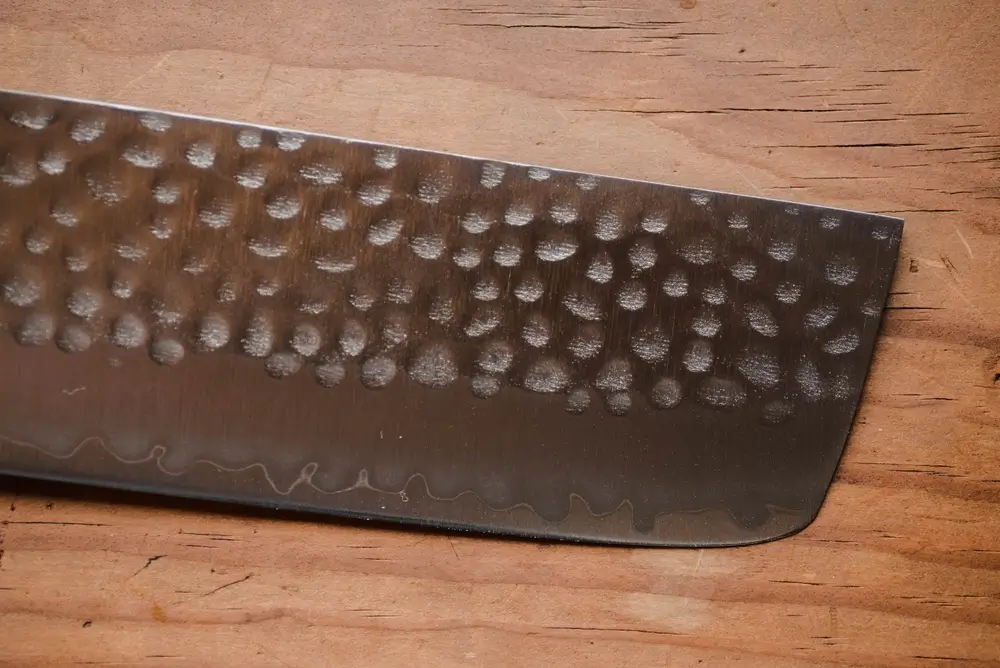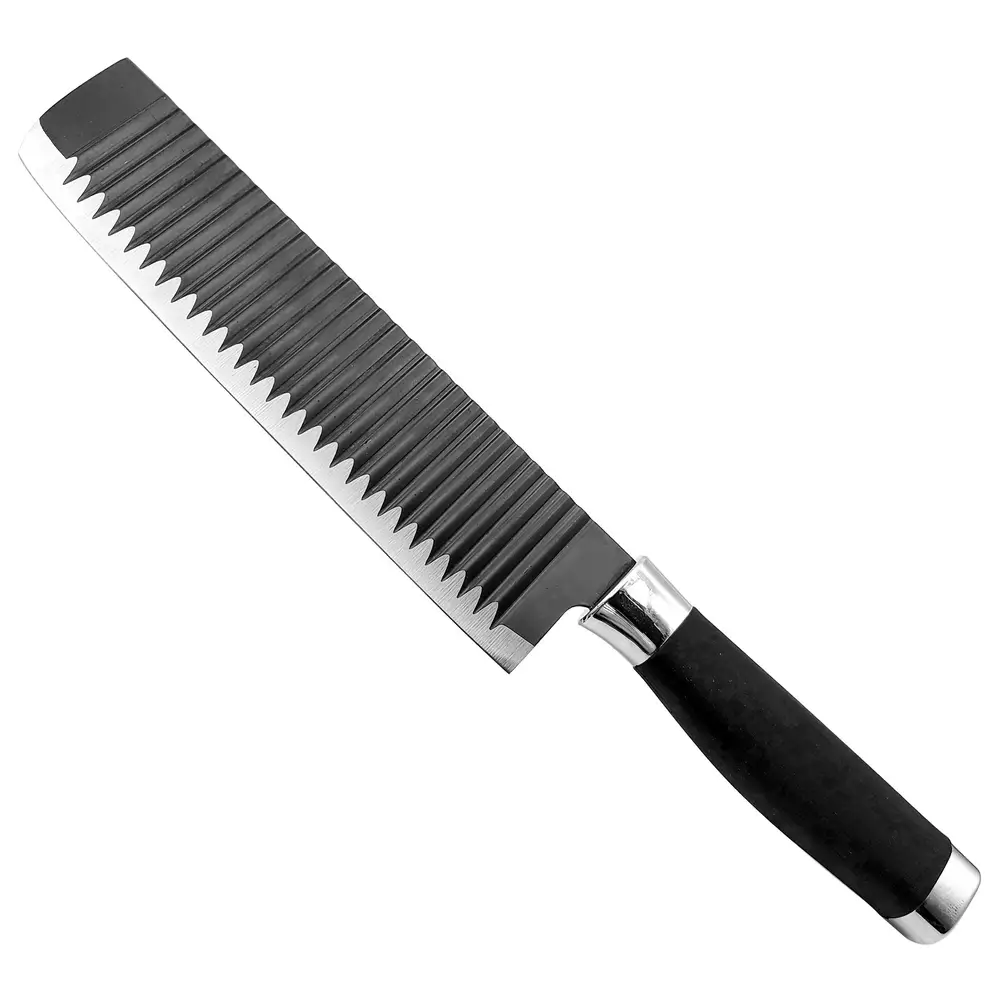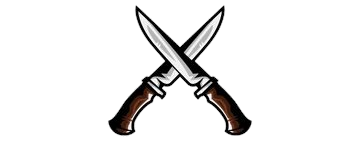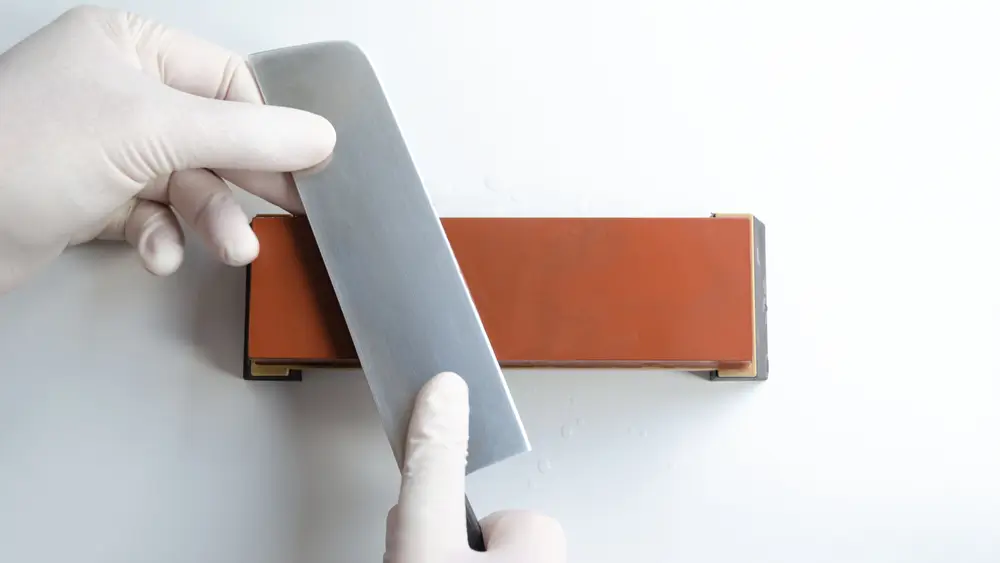A Nakiri knife is a type of Japanese vegetable knife that is characterized by its rectangular blade and straight blade edge. It is commonly used in Japanese cuisine for the preparation of vegetables, meat, and fish. The word “Nakiri” actually means “leaf knife” in Japanese.
If you’re looking for a versatile and durable kitchen knife that will make light work of all your chopping needs, then a Nakiri knife is the perfect option for you. In this blog post, we’ll take a closer look at what a Nakiri knife is, what is a nakiri knife used for, and some of the best Nakiri knives on the market today.
What Is Nakiri Knife?
The Nakiri knife is a Western-style vegetable knife with square-shaped and wide blades with curved cutting surfaces. It was specifically designed for rapid and efficient cutting, dicing, and mincing of vegetables and fruits and has become an essential food for vegetarians and home cooks in Japan. Nakiri knives are often called the double bevel versions of Usuba, which is a special Japanese single bevel knife recommended for culinary professionals.
What is a Nakiri Knife Used For?

As we mentioned above, Nakiri knives are most commonly used for slicing, dicing, and chopping vegetables. They can also be used for mincing meats and fish, but what’s best suited for is vegetables. The straight blade edge of the Nakiri knife makes it ideal for precise cuts, which is why it’s such a popular choice amongst professional chefs.
If you’re someone who enjoys cooking at home and wants to up your chopping game, then investing in a Nakiri knife is definitely worth considering. Not only will it make light work of all your chopping needs, but it will also last you for many years to come if properly cared for.
Some Features of Nakiri Knife
Now, we’ll take a closer look at the features of Nakiri knives so that you can better understand what makes them so special.
Blade Design
One of the most distinguishing features of Nakiri knives is their rectangular blade design. This design is well-suited for cutting vegetables because it provides a large cutting surface area and allows for precision chopping. The blades of Nakiri knives are also relatively thin, which makes them ideal for slicing vegetables thinly and evenly.
Shape
Another notable feature of Nakiri knives is their shape. Unlike chef’s knives, which have a curved blade, Nakiri knives have a straight blade edge. This straight blade edge allows for precision chopping and makes it easy to follow the contours of the cutting board. Additionally, the straight blade edge prevents food from sticking to the knife while cutting.
Edge Grind
The edge grind of a Nakiri knife is another important feature to consider. The edge grind refers to the angle at which the blade has been sharpened. For Nakiri knives, the ideal edge grind is between 15 and 20 degrees. This relatively low-edge grind results in a sharper blade that can retain its edge for a longer period. However, it should be noted that blades with a lower-edge grind are more likely to chip or become damaged if not used properly.
As you can see, there are many features that make Nakiri knives so special. Just be sure to take care of your Nakiri knife and use it properly to avoid any damage to the blade.
The Differences Between Nakiri and Santoku Knives
Nakiri and Santoku knives are two of the most popular kitchen knives on the market today. Though they may look similar at first glance, there are quite a few differences between these two types of blades. Here, we’ll be exploring the key differences between Nakiri and Santoku knives so that you can make a good decision about which type of knife is right for your needs.
Nakiri knives
Nakiri knives are Japanese-style vegetable knives that are characterized by their long, rectangular blades. The blades of Nakiri knives are typically sharpened on both sides, which makes them ideal for slicing vegetables into thin, even pieces. Because of their shape, Nakiri knives are also well-suited for chopping vegetables into larger pieces.
Santoku knives
Santoku knives, on the other hand, are Japanese-style all-purpose knives that can be used for a variety of tasks in the kitchen. Santoku knives have shorter, curved blades that are sharpened on one side only. The curved shape of Santoku blades makes them ideal for slicing and dicing meat and fish.
Both Nakiri and Santoku knives offer distinct advantages for different tasks in the kitchen. If you’re looking for a versatile knife that can handle a wide range of tasks, then a Santoku knife is probably the best option for you. If you’re looking for a knife that excels at chopping vegetables, then a Nakiri knife is likely the better choice. Ultimately, the type of knife you choose should be based on your own specific needs and preferences.
The Difference Between Nakiri and Usuba Knives
When it comes to Japanese vegetable kitchen knives, there are two that are most commonly used: the nakiri and the usuba. Both are vegetable knives that are essential for any sushi chef. So, what’s the difference between the two? Let’s take a closer look.
Nakiri
The nakiri is a rectangular knife that is great for chopping vegetables. It has a sharp edge that is good for precise cuts.
Usuba
The usuba, on the other hand, is a round knife that is better for slicing vegetables. The usuba also has a thinner blade, which makes it easier to create paper-thin slices.
Nakiri vs Usuba: Which One Should You Use?
The answer to this question depends on what you will be using the knife for. If you need to chop a lot of vegetables, then the nakiri is the better choice. However, if you need to slice vegetables thinly, then the usuba is the better option.
Points to Consider When Buying a Nakiri Knife

As mentioned before, Nakiri is a Japanese-style knife that is characterized by its sharpness and straight blade. The nakiri knife is also lightweight, making it easy to control. Below are a few points to keep in mind when you are looking to purchase a nakiri knife.
- Size
First and foremost, you need to consider the size of the knife. Nakiri knives come in different sizes, so it is important to choose one that is comfortable for you to hold and use. If you are going to be doing a lot of chopping, then you might want to opt for a larger knife. If you only plan on using it for smaller tasks such as slicing vegetables, then a smaller knife should suffice.
- Blade Material
Another thing to keep in mind is the blade material. Nakiri knives typically have either carbon steel or stainless steel blades. Carbon steel blades are sharper but they are also more susceptible to rusting. Stainless steel blades, on the other hand, are not as sharp but they are easier to maintain and less likely to rust.
- Handle
You should also think about the knife’s handle. It should be comfortable to hold, strong and durable, and water resistant so that it does not become slippery when wet.
- The Blade Finish
When it comes to kitchen knives, the blade finish is also an important factor to consider.
There are three main types of blade finishes: polished, hammered, and brushed.
Each one has its unique benefits and drawbacks.
Polished blades are the most common type of finish and they are the sharpest. However, they also require the most maintenance because they can easily get scratched.
Hammered blades are less sharp than polished blades but they are more resistant to scratches. They also have a unique look that some people prefer.
Brushed blades are not as sharp as either polished or hammered blades, but they are the most durable and least likely to rust.
With these considerations in mind, you should be able to find the perfect nakiri knife for your needs!
Is a Nakiri knife good for meat?

While Nakiri knives are not specifically designed for cutting raw meat, they can be used for this purpose. They have a rectangular sharp blade that can make quick work of meat, although it is not as efficient as a butcher’s knife.
Conclusion
A Nakiri knife is an essential piece of kitchen equipment that every home cook should own. If you’re looking for a versatile and durable kitchen knife that will make light work of all your chopping needs, then a Nakiri knife is the perfect option for you.
In this blog post, we took a closer look at what’s a Nakiri knife, what is a Nakiri knife used for, and points to consider while buying nakiri knives. Investing in a quality Nakiri knife is definitely worth considering if you want to take your home cooking to the next level.
FAQs
Is a nakiri knife worth it?
Yes, a nakiri knife is definitely worth the investment. It is a versatile and durable kitchen knife that will make light work for all your chopping needs.
What is a nakiri knife used for?
Nakiri knives are typically used for chopping vegetables.
What does Nakiri mean in Japanese?
Nakiri is a Japanese word that means “veggie or leaf knife.” It is named after its rectangular shape which is perfect for chopping vegetables.

